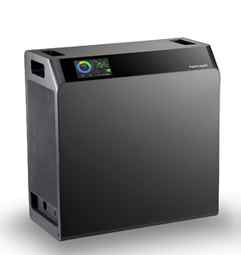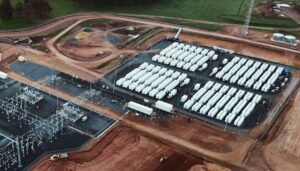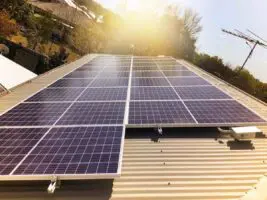AGL Energy says its first battery storage offering for consumers will be available in Queensland next month, but it won’t be the Tesla Powerwall, which it judges to be too small for the Australian market.
Marc England, the head of AGL Energy’s New Energy division, which is leading the group’s push into solar, battery storage, electric vehicles and other technologies, says AGL has chosen a 7.2kWh battery from Taiwanese firm AU Optronics (AUO) for its initial storage installations.
AGL Energy is the first of the big retailers to roll out a storage option for households, a decision that was fast-tracked by the recent Tesla Powerwall pricing announcement, and the falling cost of battery storage.
“We’ve spent the last 12 months scanning the world, talking to very different battery manufacturers – and there are a lot out there – trying to find which one will meet the needs of consumers in Australia,” England told ABC TV’s 7.30 Report in an interview. (Not all the interview was broadcast. RenewEconomy obtained a transcript).
“There are several factors in there that matter to Australian households,” England said. “Not only should we consider the absolute capacity of a battery to store energy, which is transformation itself, but also how quickly you can charge and discharge into the hard.
“And so we have chosen a manufacturer certainly for the next few months that will provide a battery that we believe meets Australian consumer needs.”
England said the 7.2kWh AUO battery would come with a 3kW inverter, and the combination would allow Australian consumers to run their appliances and their air-conditioning late in the afternoon.
AUO also owns the BenQ solar brand. More information can be found about the 7.2kWh PowerLegator storage device here and here.
The choice of Queensland is interesting. For those not enjoying the premium feed in tariffs for another decade, payback times for battery storage are among the best in Australia, according to Morgan Stanley.
England said the Tesla Powerwall has a much smaller output of 2kW, “which we think won’t be suitable to Australian consumers.” He said if a battery of that size was in a consumer’s home in Australia. “it’s unlikely that they’ll be able to run their air-conditioner as well is a lights and fridge and other appliances” at the same time.
In any case, the first Tesla batteries will not be available in Australia until early 2016.
England said AGL Energy was not yet talking about price, because of the variable needs of individuals, and whether they were retrofitting a battery to an existing solar system versus or installing a brand new system.
The price would also be dependent on the “bundled package” that would include solar, storage and other products, as well as an energy contract.
AGL Energy and other retailers see energy storage as a key means to retain customers for longer than they currently do, and to keep “skin” and hardware in the game as the energy sector moves to a decentralised model, where half or more of electricity demand will eventually be generated – and potentially stored – on rooftops of homes and businesses and within local communities.
AGL Energy’s new CEO Andrew Vesey is expected to unveil the group’s strategy at a presentation to analysts and investors on Tuesday. As RenewEconomy reported, among the options considered is the split of its assets, although AGL Energy is unlikely to take this step at this time.
“And so we see our role as bundling the battery with other products at the home such as solar but also an energy contract,” England said. “So we will be talking to individual consumers about that, but we are not talking about an absolute price.”










